
A heritage railway or heritage railroad is a railway operated as living history to re-create or preserve railway scenes of the past. Heritage railways are often old railway lines preserved in a state depicting a period in the history of rail transport.
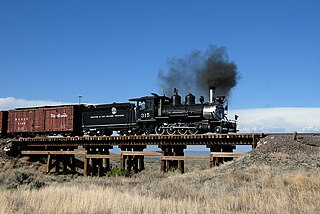
Conservation and restoration of rail vehicles aims to preserve historic rail vehicles.

Heritage streetcars or heritage trams are a part of the efforts to preserve rail transit heritage. In addition to preserving street-running rail vehicles, heritage streetcar operations can include upkeep of historic rail infrastructure. Working heritage streetcars are closely related to the growing global heritage railway movement and form a part of the living history of rail transport.

The San Diego Electric Railway (SDERy) was a mass transit system in Southern California, United States, using 600 volt DC streetcars and buses.
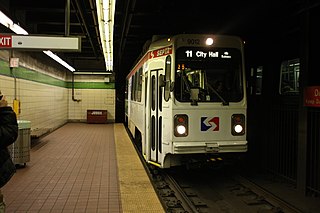
The SEPTA subway–surface trolley lines are a collection of five SEPTA trolley lines that operate on street-level tracks in West Philadelphia and Delaware County, Pennsylvania, and also underneath Market Street in Philadelphia's Center City. The lines, Routes 10, 11, 13, 34, and 36, collectively operate on about 39.6 miles (63.7 km) of route.

The Fort Collins Municipal Railway operated streetcars in Fort Collins, Colorado, from 1919 until 1951. Since 1984, a section of one of the former routes has been in operation as a seasonal heritage streetcar service, under the same name, running primarily on Spring and Summer weekends. The heritage service is operated by volunteers from the Fort Collins Municipal Railway Society (FCMRS). The streetcar in use on the heritage line, Birney "Safety" Streetcar No. 21, is listed on the National Register of Historic Places.

The McKinney Avenue Transit Authority (MATA), a non-profit organization, operates the M-Line Trolley in Dallas, Texas. In operation since 1989, it is an example of a heritage streetcar running historic cars. The M-Line Trolley operates 7 days per week, 365 days per year. Since 2002, the M-Line Trolley is free to the public, thanks to donations and a joint operating subsidy received from Dallas Area Rapid Transit (DART) and the Uptown Improvement District. The main stretch of the line runs along McKinney Avenue in Uptown between West Village and Klyde Warren Park / Dallas Arts District. The M-Line Trolley connects to the DART light rail system at CityPlace/Uptown on the northern end and St. Paul on the southern end.
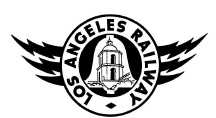
The Los Angeles Railway was a system of streetcars that operated in Central Los Angeles and surrounding neighborhoods between 1895 and 1963. The system provided frequent local services which complemented the Pacific Electric "Red Car" system's largely commuter-based interurban routes. The company carried many more passengers than the Red Cars, which served a larger and sparser area of Los Angeles.

Tucson Transit Management LLC, doing business as Sun Tran, is the public transit system serving the city of Tucson, Arizona. In 2022, the system had 15,717,100 rides, or about 54,500 per weekday as of the second quarter of 2023. 100% of the fleet utilizes clean-burning fuels, such as compressed natural gas (CNG), biodiesel, and hybrid technologies. In addition to more than 40 bus routes, the system also includes the Sun Link modern streetcar line.
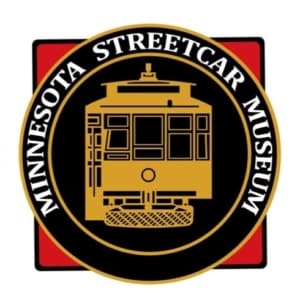
The Minnesota Streetcar Museum (MSM) is a transport museum that operates two heritage streetcar lines in Minneapolis, Minnesota, and the western suburb of Excelsior.

The Fort Smith Trolley Museum is a streetcar and railroad museum in Fort Smith, in the U.S. state of Arkansas, which includes an operating heritage streetcar line. The museum opened in 1985, and operation of its streetcar line began in 1991. Four vehicles in its collection, a streetcar and three steam locomotives, are listed on the National Register of Historic Places (NRHP). The now approximately three-quarters-mile-long (1.2 km) streetcar line also passes four NRHP-listed sites, including the Fort Smith National Historic Site, the Fort Smith National Cemetery, the West Garrison Avenue Historic District and the 1907 Atkinson-Williams Warehouse Building, which now houses the Fort Smith Museum of History.

The Phoenix Street Railway provided streetcar service in Phoenix, Arizona, United States, from 1888 to 1948. The motto was "Ride a Mile and Smile the While."

Streetcars and interurbans operated in the Maryland suburbs of Washington, D.C., between 1890 and 1962.

Streetcars or trolley(car)s were once the chief mode of public transit in hundreds of North American cities and towns. Most of the original urban streetcar systems were either dismantled in the mid-20th century or converted to other modes of operation, such as light rail. Today, only Toronto still operates a streetcar network essentially unchanged in layout and mode of operation.

The Third Avenue Railway System (TARS), founded 1852, was a streetcar system serving the New York City boroughs of Manhattan and the Bronx along with lower Westchester County. For a brief period of time, TARS also operated the Steinway Lines in Long Island City.
The Holy Cross Cemetery Line or Holy Cross Shuttle was a public transit line in Brooklyn, New York City, United States, running as a short branch of the Nostrand Avenue Line along Tilden Avenue east to Holy Cross Cemetery at Canarsie Lane. Originally a streetcar line, it was replaced by a bus route, which is no longer operated. The route operated out of Flatbush Depot.

The MATA Trolley is a heritage streetcar transit system operating in Memphis, Tennessee. It began operating on April 29, 1993. Service was suspended in June 2014, following fires on two cars. After nearly four years and repeated postponements, the reopening of the Main Street Line took place on April 30, 2018. The system's two other lines remained suspended as of December 2022, but with reopening of both planned. In 2022, the system had a ridership of 346,700.
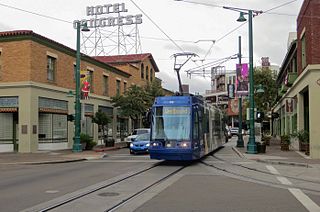
Sun Link, also known as the Tucson Streetcar, is a single-line streetcar system in Tucson, Arizona, United States, that began service in July 2014. The system's 3.9-mile (6.3 km) route connects the Arizona Health Sciences Center, the University of Arizona campus, the Main Gate and 4th Avenue shopping and entertainment districts, downtown Tucson, the Tucson Convention Center, and the Mercado District under development west of Interstate 10. The streetcar project's overall cost of $196 million was met through a combination of local funding sources and federal grants. The streetcar shares a common payment system with the Sun Tran regional bus service. In 2022, the line had a ridership of 1,484,900, or about 4,600 per weekday as of the second quarter of 2023.
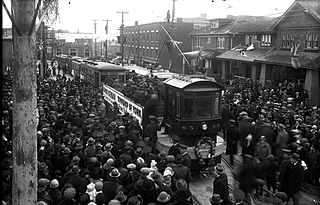
The Rogers Road streetcar line was a streetcar line that operated mainly within the Township of York from 1924 to 1974. The line was owned by the Township of York Railways, which in turn was owned by its namesake municipality. The Township of York Railways contracted with the Toronto Transportation Commission, later the Toronto Transit Commission (TTC), to operate the line.

Fort Collins Municipal Railway Birney Safety Streetcar No. 21 is a streetcar in Fort Collins, Colorado, listed on the U.S. National Register of Historic Places. Built in 1919 by the American Car Company for the Fort Collins Municipal Railway, it is a type of streetcar known as a Birney "Safety Car". It was listed on the National Register in 1984 and is one of fewer than 10 streetcars listed.




















